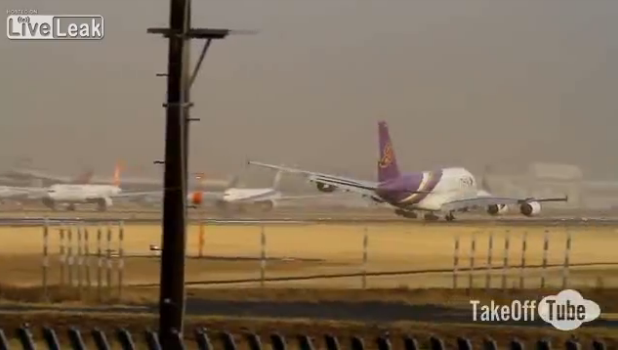Crosswind landings are quite frequent at military and civil airports all around the world.
In such conditions, depending on the type of aircraft, pilots may be required to apply a Wind Correction Angle (WCA) and “crab” the plane aligning nose and tail with the wind direction to counter the drifting effect of side winds.
Usually crabbed approaches are safe, unless gusts are particularly strong. As in the following video.
Reportedly filmed at Narita airport, Tokyo, on Mar. 13, 2013, the footage shows a scary approach by a Thai Airbus 380 under a max crosswind of 27.4 m/s.
The heavy liner almost touches the ground with the right wingtip before coming to a safe halt.
A famous mishap cause by strong crosswinds occurred on Mar. 1, 2008, when a Lufthansa Airbus 320 approaching runway 23 at Hamburg performed an unstable flare and slided the left wingtip along the tarmac suffering wing and slat damage.

















